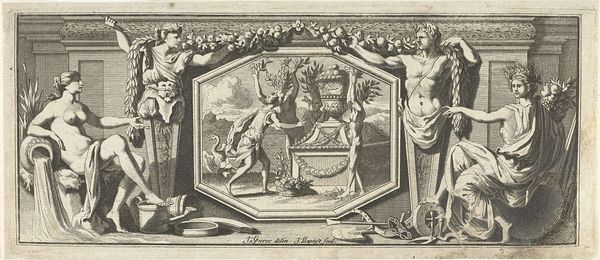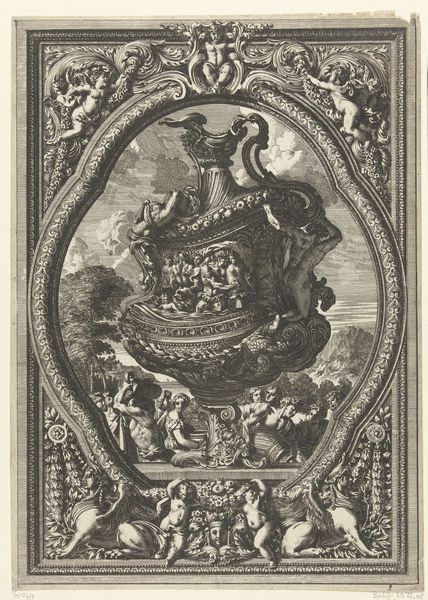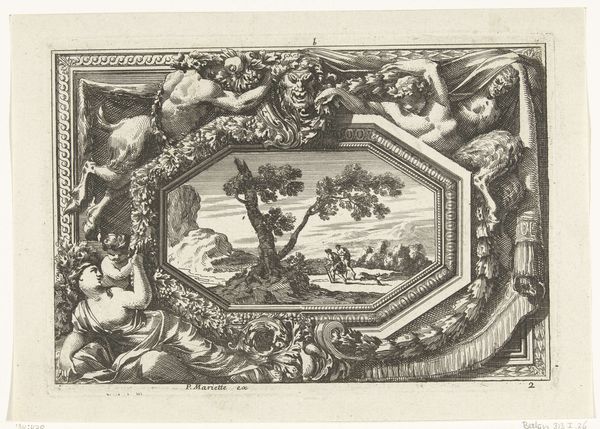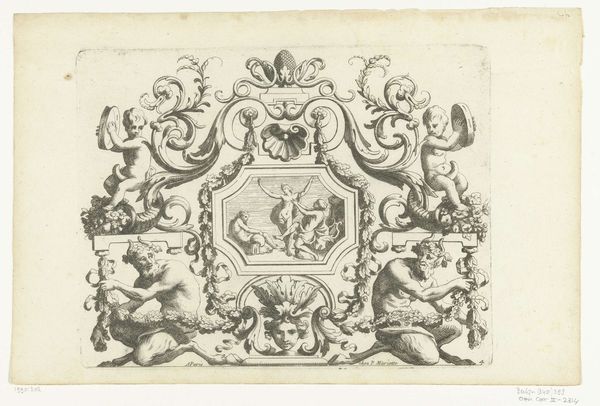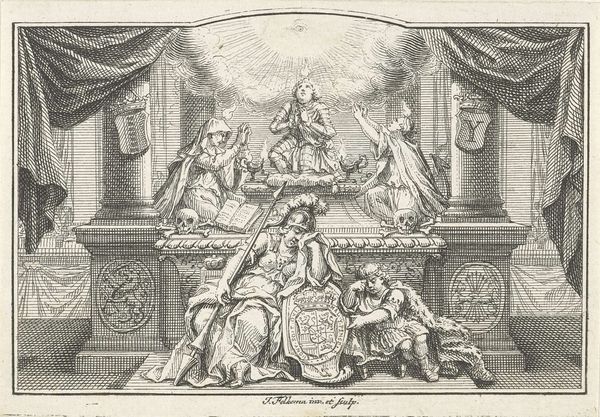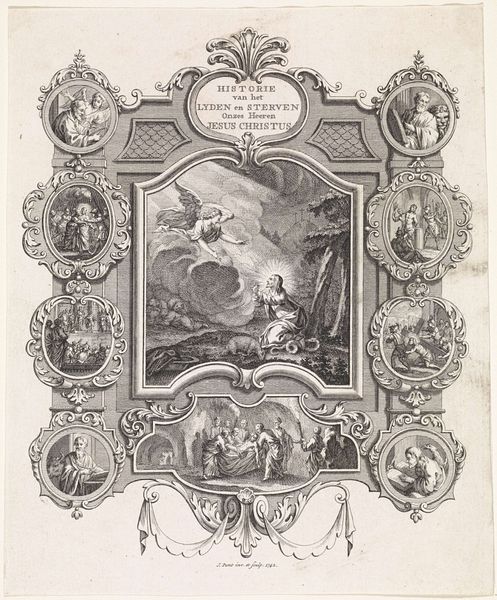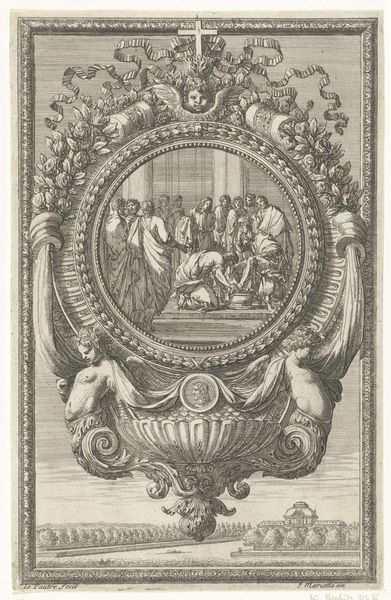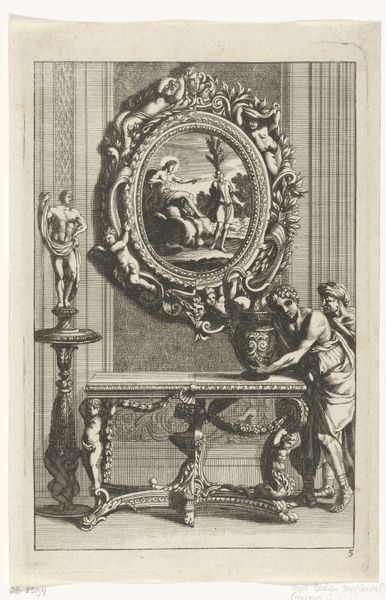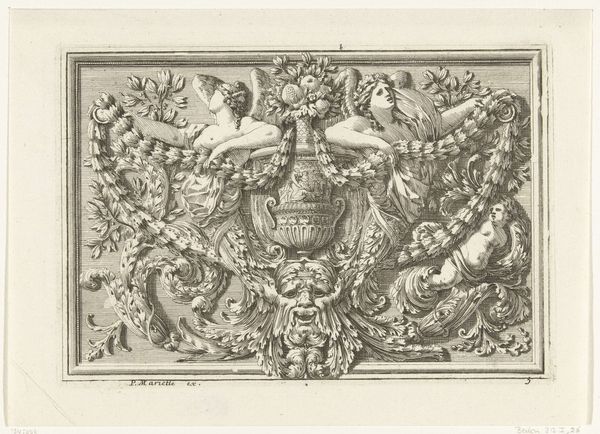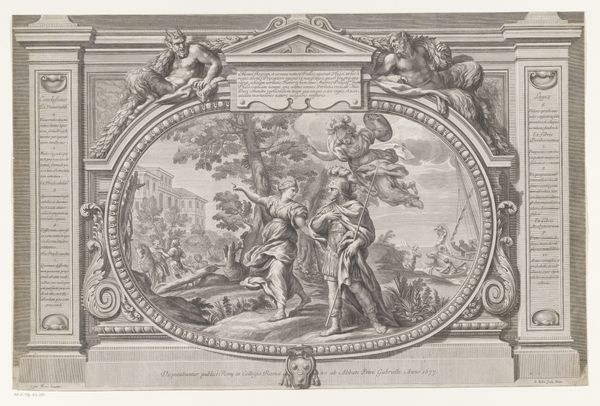
engraving
#
baroque
#
old engraving style
#
figuration
#
personal sketchbook
#
limited contrast and shading
#
line
#
decorative-art
#
engraving
Dimensions: height 146 mm, width 218 mm
Copyright: Rijks Museum: Open Domain
Jean Lepautre made this print of a design for a polygonal salt cellar sometime in the 17th century. Salt cellars such as the one Lepautre designed were more than just functional objects. They were symbols of wealth and status displayed during elaborate banquets by members of the French Aristocracy. Framed within a complex cartouche decorated with figures from classical mythology, the design is a window into the culture of luxury under the Bourbon Kings. Royal patronage of the arts, typified by institutions such as the Académie Royale de Peinture et de Sculpture, shaped artistic production in France at this time, and encouraged the development of ornamental styles like the one seen here. The image suggests the ways in which access to even a basic commodity like salt was affected by social class. By studying sources such as inventories of aristocratic households and records of the Académie Royale, we can come to understand the relationship between art, power, and social life in early modern France.
Comments
No comments
Be the first to comment and join the conversation on the ultimate creative platform.


